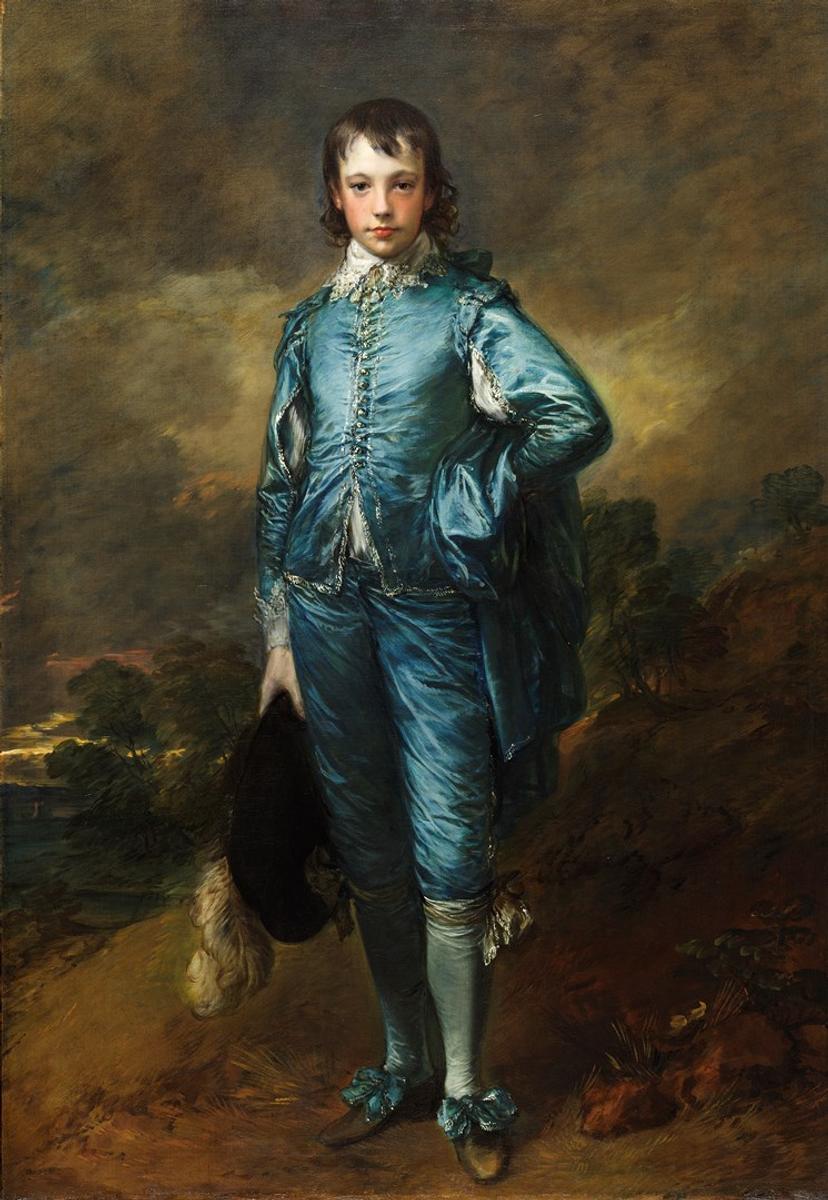
At the National Gallery, The Blue Boy is displayed in Room 46 among a small selection of related masterworks that connect to Gainsborough’s oeuvre and influences, particularly van Dyck’s paintings.
(Learn more in the curator's video Why is Gainsborough's 'Blue Boy' so famous?)
Offering a rare chance to see both of these British master portraits under one roof, while The Blue Boy is on loan, The National Gallery in London has wrapped up conservation of Portrait of Charles William Lambton (1818-31) by Sir Thomas Lawrence (1769 – 1830), and the newly acquired painting is now installed in Room 35.

World renowned as The Red Boy, the 1825 work was made when Lawrence, one of the first trustees of the National Gallery, was at the height of his powers as painter and portraitist, a year after the museum opened to the public in 1824.
The painting was acquired last year from a private collection by private treaty sale via Christie’s, at a "special price" of £9.3 million (around $12.7 million). The funding came from the Art Fund and American Friends of the National Gallery, plus other sources.
The portrait of Charles Lambton, commissioned by his father John George Lambton (1792-1840), created 1st Earl of Durham in 1833, was a sensation on its first exhibition at the Royal Academy in 1825. Perenially-popular, The Red Boy was the first painting ever to be included on a British postage stamp, and the image was long-featured on products from tea tins to food packaging.
The portrait of the six- or seven-year-old boy shows Lawrence’s mature powers to the full, in the open but pensive glance, the elegant but informal pose with the bent arm reflecting the Renaissance artist’s traditional depiction of melancholy, the bravura painting of the red velvet suit, and the extraordinary and unusual background. Lawrence has placed his sitter outdoors at night, seated on a rocky promontory overlooking the sea, with moonlight reflected in the water – it has been suggested that he might have been inspired by Leonardo’s Virgin of the Rocks, brought to London in 1785 and perhaps exhibited there in 1818 (it did not enter the National Gallery collection until 1880). The effect is undoubtedly romantic, and Lawrence may have intended his setting to characterise the young boy as being on the cusp of a journey through life - although he was not to know when painting this, that his young sitter was to tragically die at the age of only 13 from tuberculosis.

Dr Gabriele Finaldi, Director of the National Gallery, remarked that the portrait "is a tour de force of technical brilliance and at the same time a moving representation of a young boy becoming self-aware."
Adding, "This dazzling portrait will join other superb child paintings at the Gallery, including works by Murillo, Hogarth, Liotard, Gainsborough and Vigée Le Brun. I am confident that...it will quickly become a much-admired painting for all our visitors."
Before The Blue Boy visited London, a commissioned portrait by Kehinde Wiley was hung on an opposite wall spot at The Huntington. (Wiley has a Romantic landscape-inspired exhibition, The Prelude, on current view at The National Gallery, until April 18, 2022).